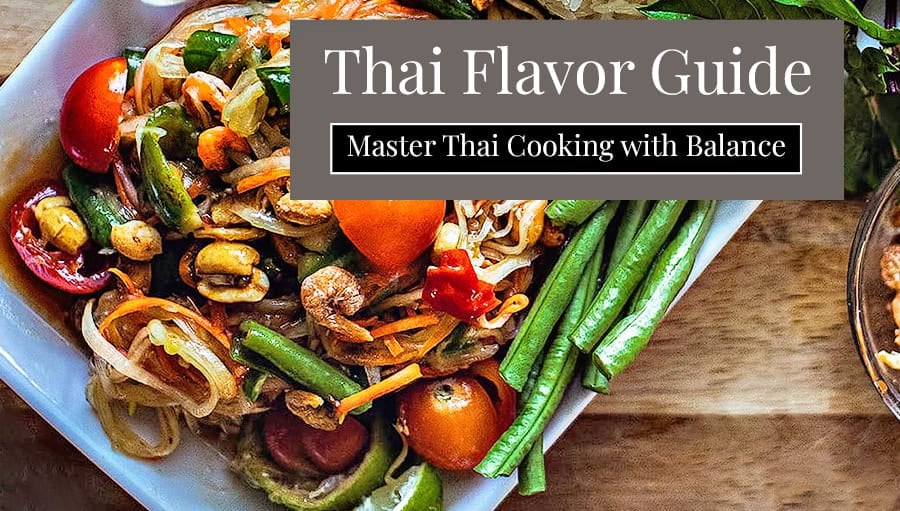If there’s one tool every Thai kitchen needs, it’s a good mortar and pestle. Before blenders and food processors, Thai cooks used this simple setup to make everything from curry pastes to spice blends to fiery dipping sauces. And to be honest? The flavor is still better this way.
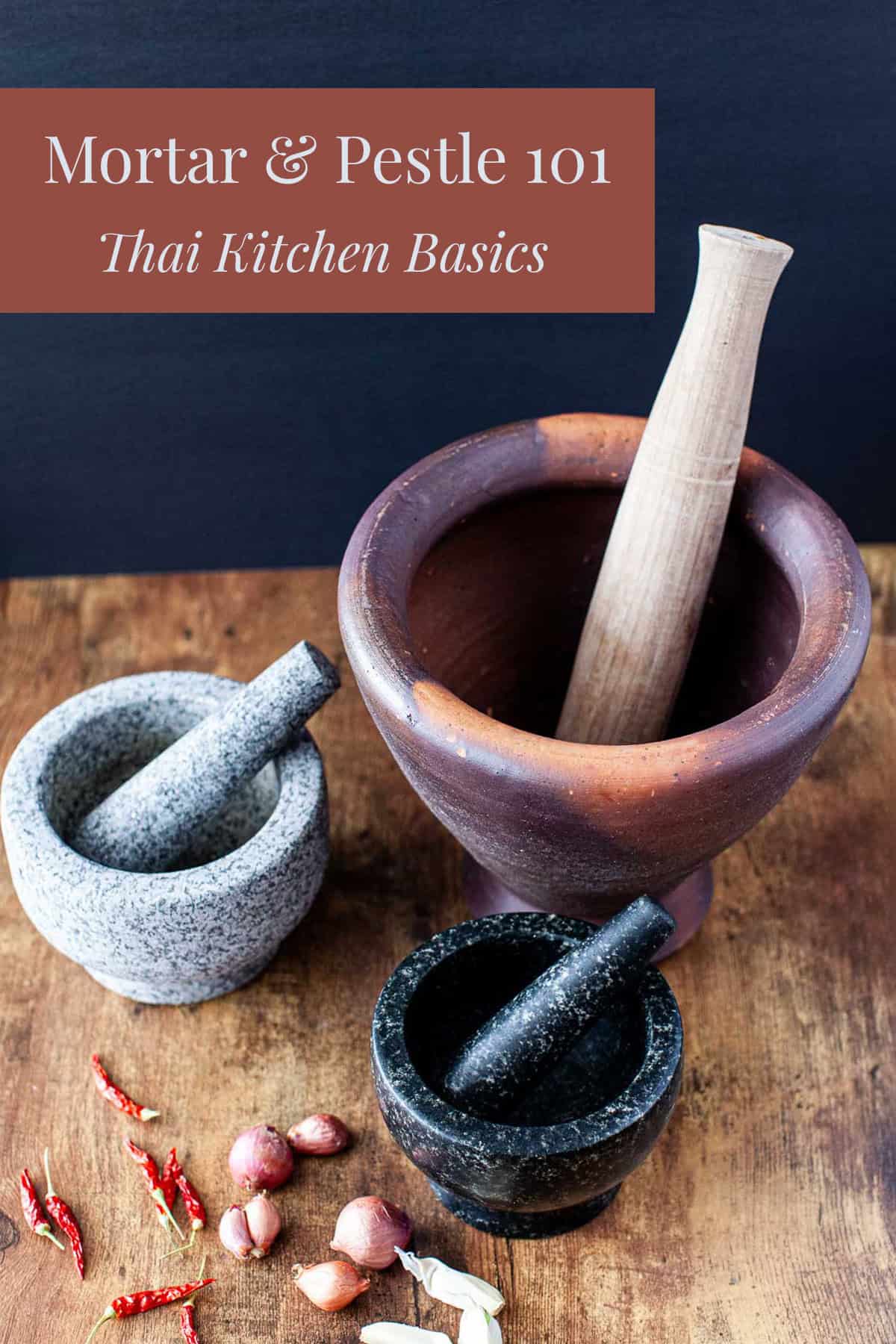
But not all mortar and pestles are created equal. Depending on what you’re making, you might need a heavy-duty granite version or a small ceramic one for spices. Let’s walk through the best types and how I use each in my Thai kitchen.
Explore more helpful Thai kitchen resources in these articles. Essential Kitchen Tools and Utensils for Thai Cooking and where to shop online for your Asian ingredients and tools.
Why Use a Mortar & Pestle in Thai Cooking?
The pounding motion brings out oils and aromas that machines can’t. It also gives you more control over texture—especially important for chili pastes (nam prik), curry pastes, or fresh herb sauces. In Thai cooking, this tool isn’t just for grinding—it’s for building flavor.
👉 Learn more about the Tools of the Thai Kitchen
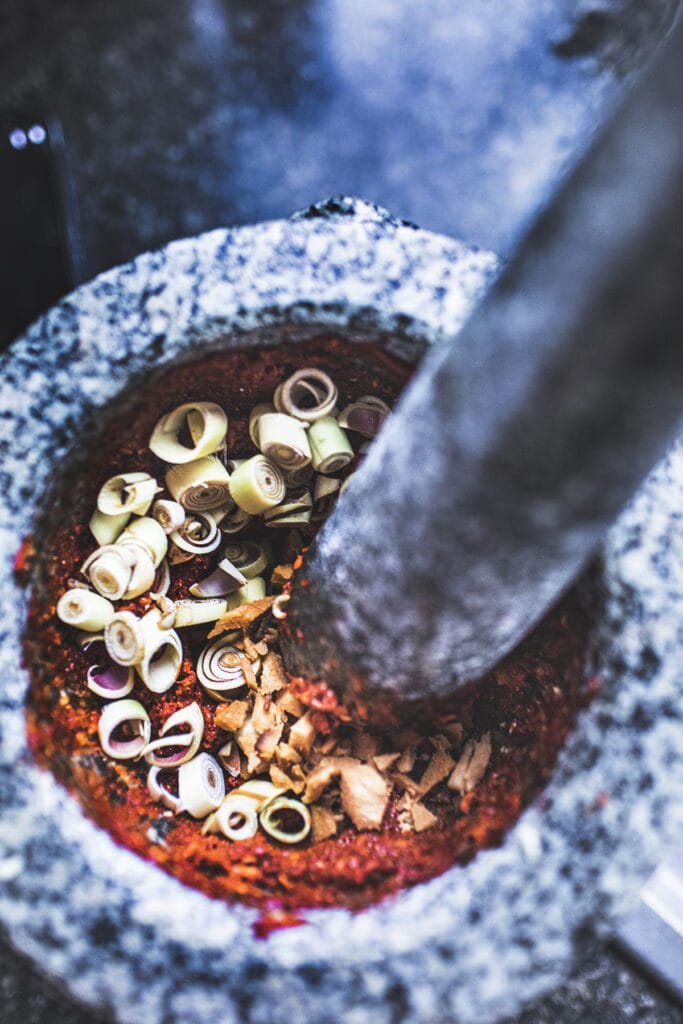
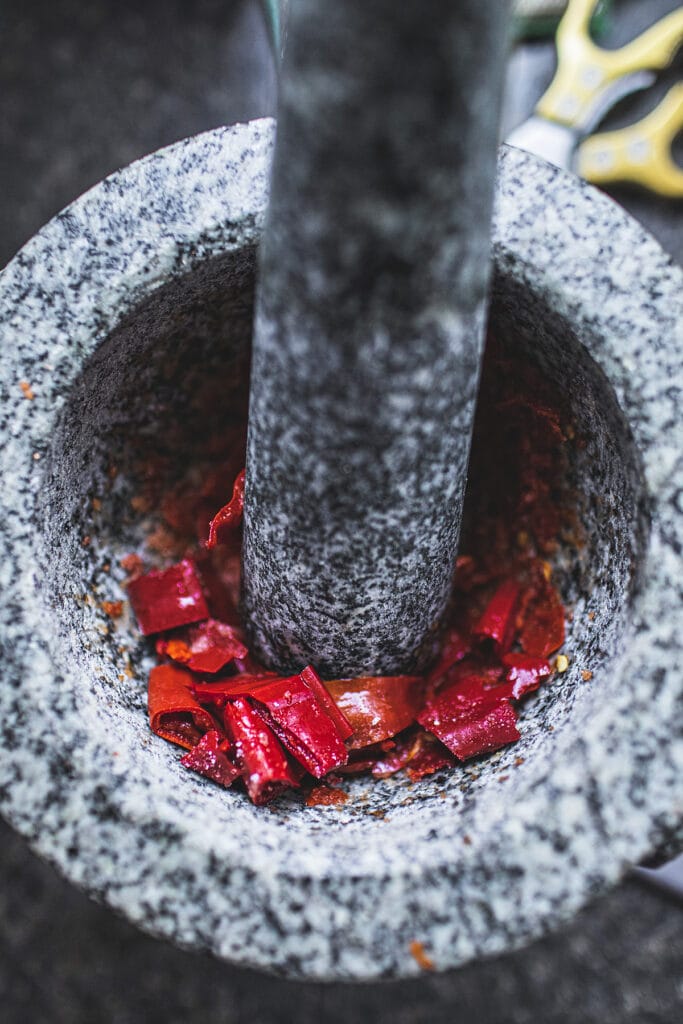
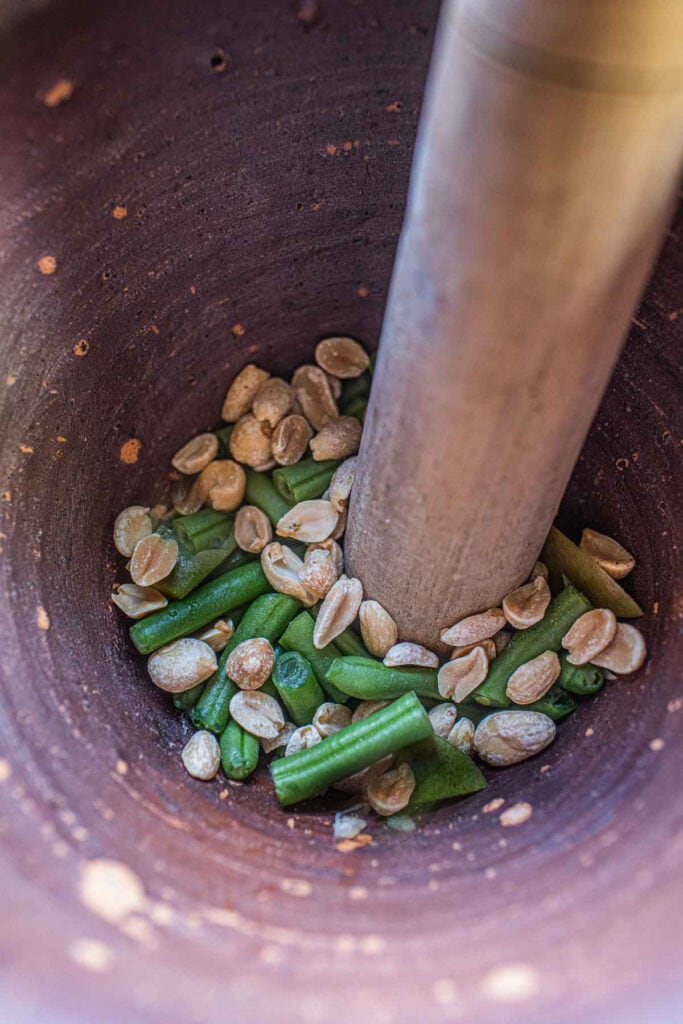
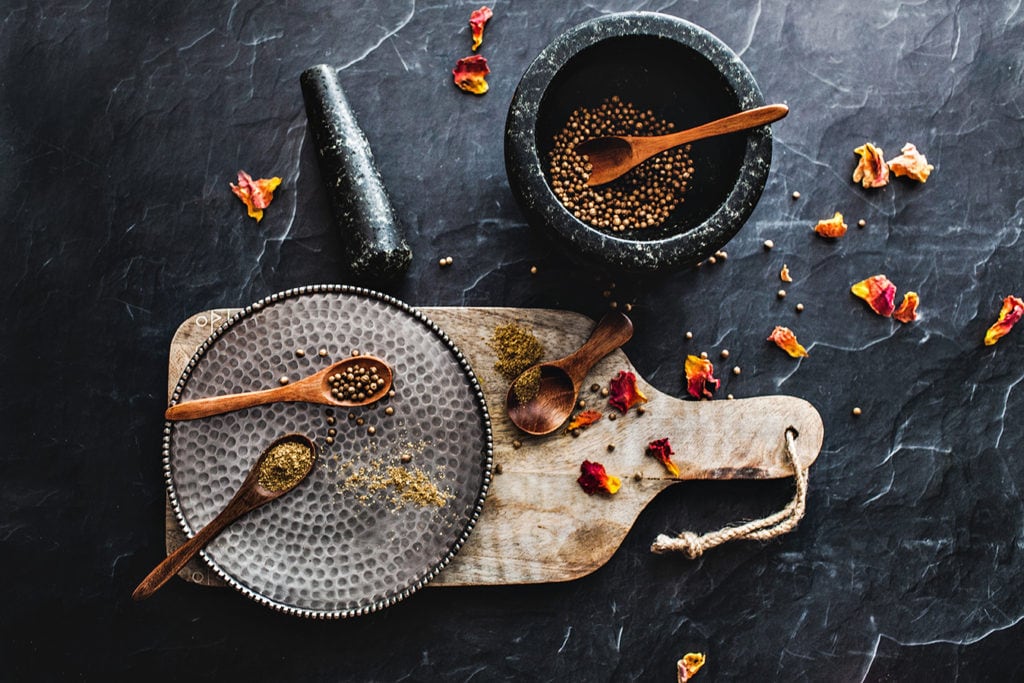
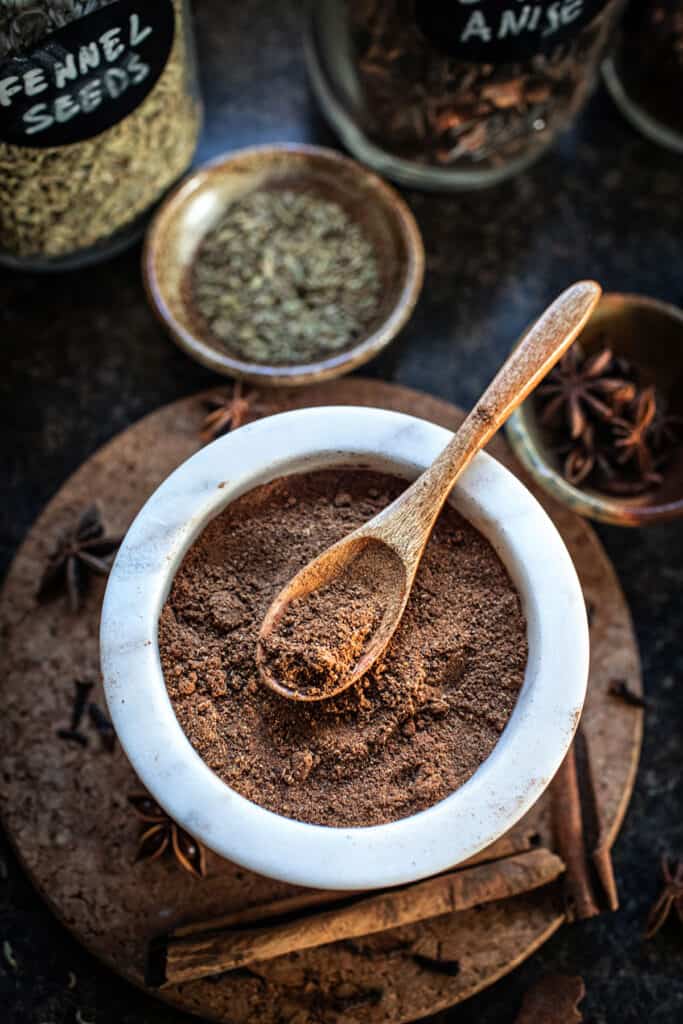
Types of Mortar & Pestles for Thai Cooking
Besides being functional, all of these mortar and pestles have something else in common—they’re beautiful. Whether it’s a polished granite bowl, a rustic clay base, or a small stone set tucked into a corner, they add warmth and character to your kitchen. I’ve used each one not just for cooking, but as a serving bowl or even a conversation-starting centerpiece.
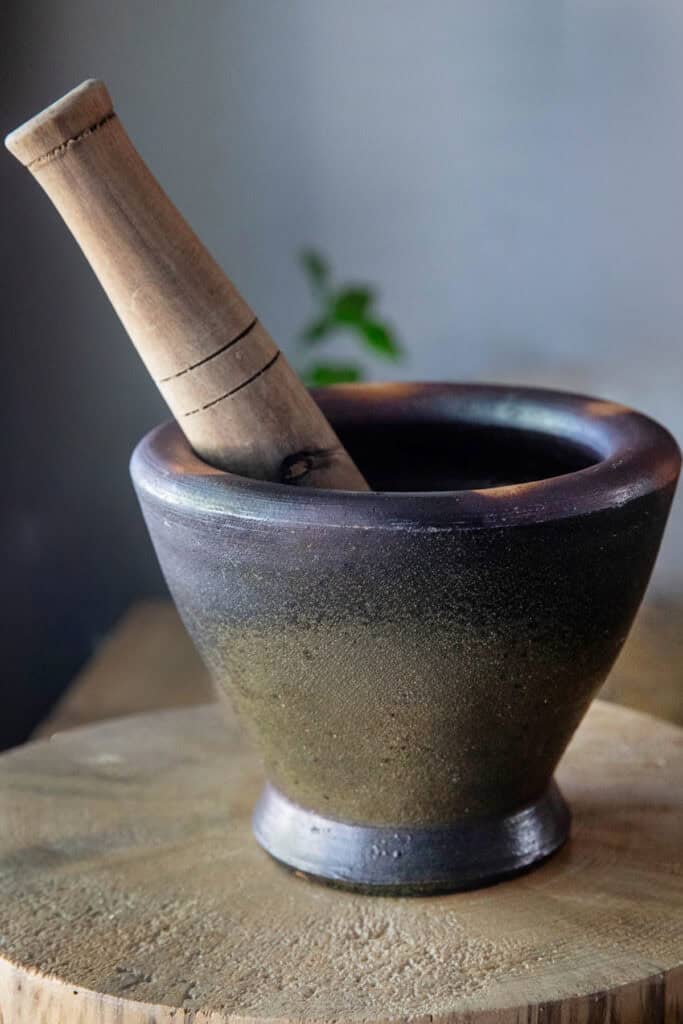
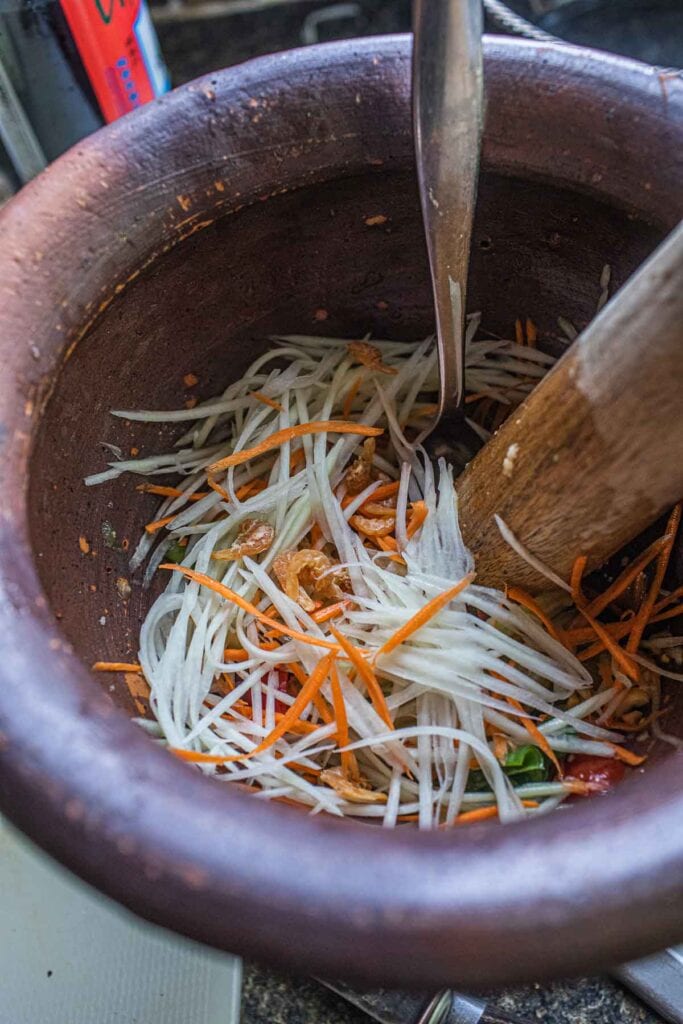
This combo is classic in Isaan cooking. It’s perfect for bruising vegetables and mixing Thai salads like Som Tum. I’ve even served papaya salad right in the mortar—it’s both functional and beautiful.
Best for: Papaya salad, tomato salad, cucumber salad, jeow (dipping sauces)
Pros: Lightweight, beautiful, great for mixing
Cons: Fragile, can crack if mishandled
This is the workhorse of the Thai kitchen. Perfect for pounding curry pastes, smashing garlic, bruising herbs, and making sauces like Som Tum (Green Papaya Salad). The weight and texture of granite make it ideal for tougher ingredients.
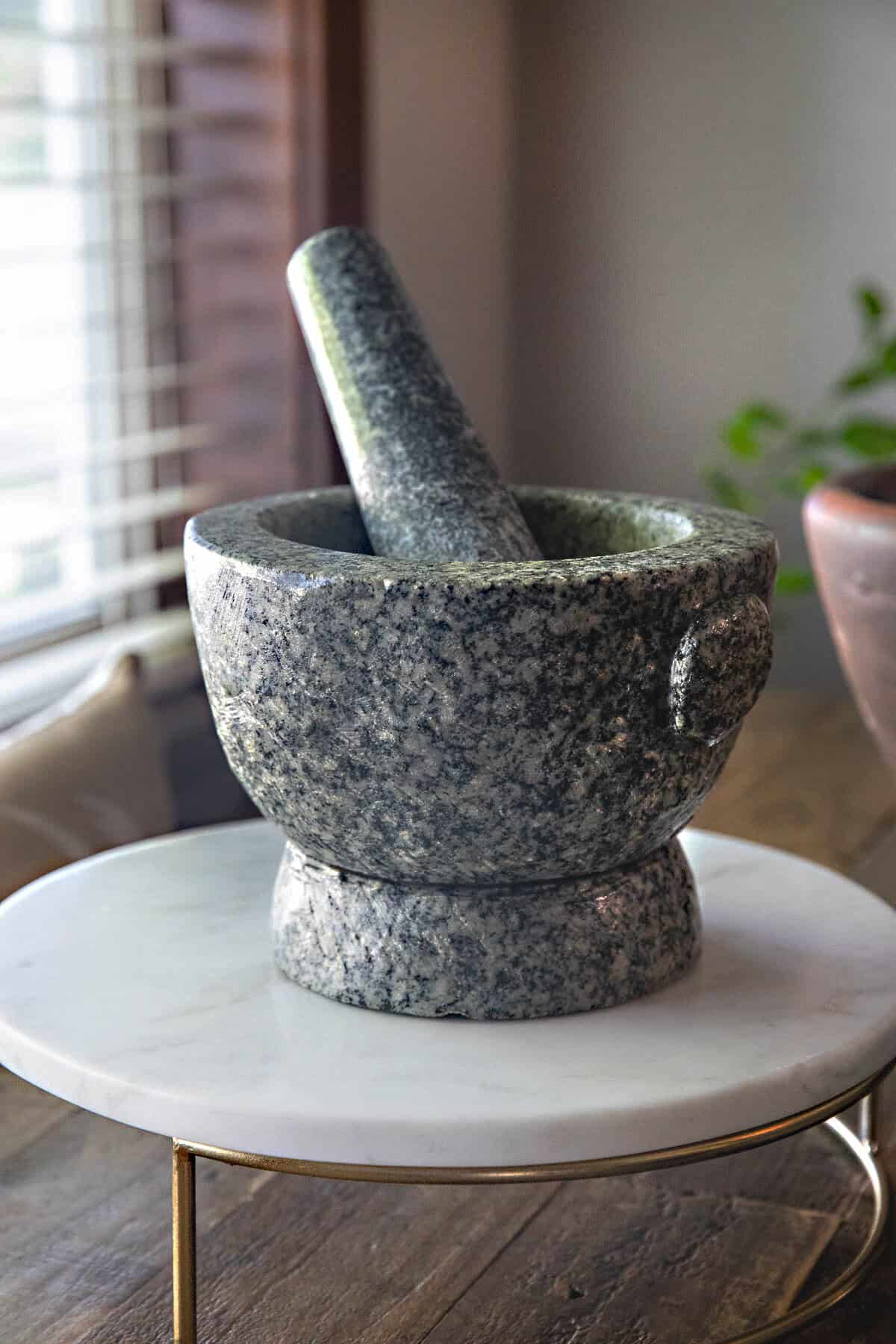
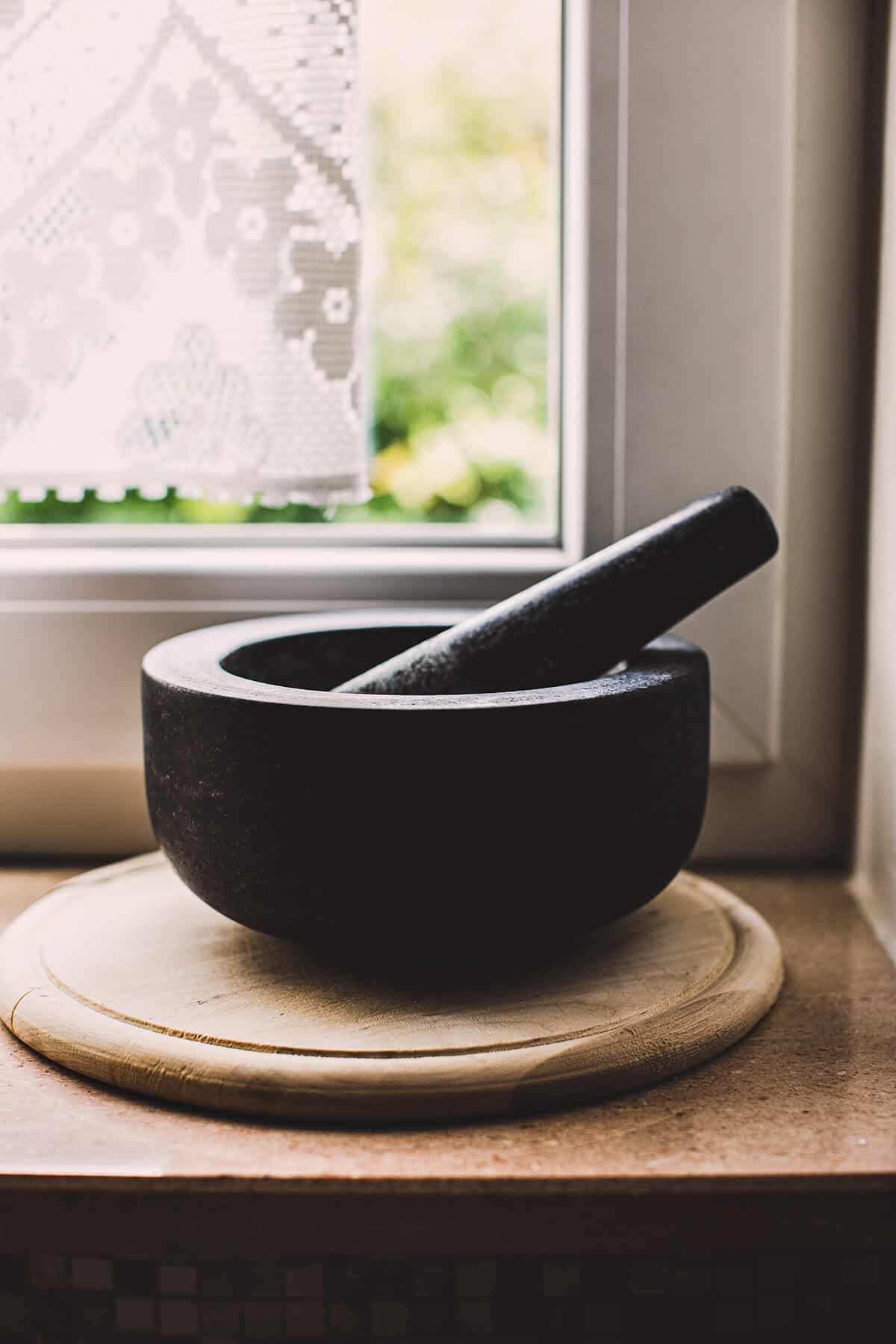
Best for: Curry pastes, chili dips, salad dressings, garlic-chili-lime pastes
Size: 6–8 inches wide (mine is 7.5″)
Where to buy: Asian markets or online stores
Pros: Heavy, stable, grinds everything
Cons: Heavy to move and clean, not great for dry spices
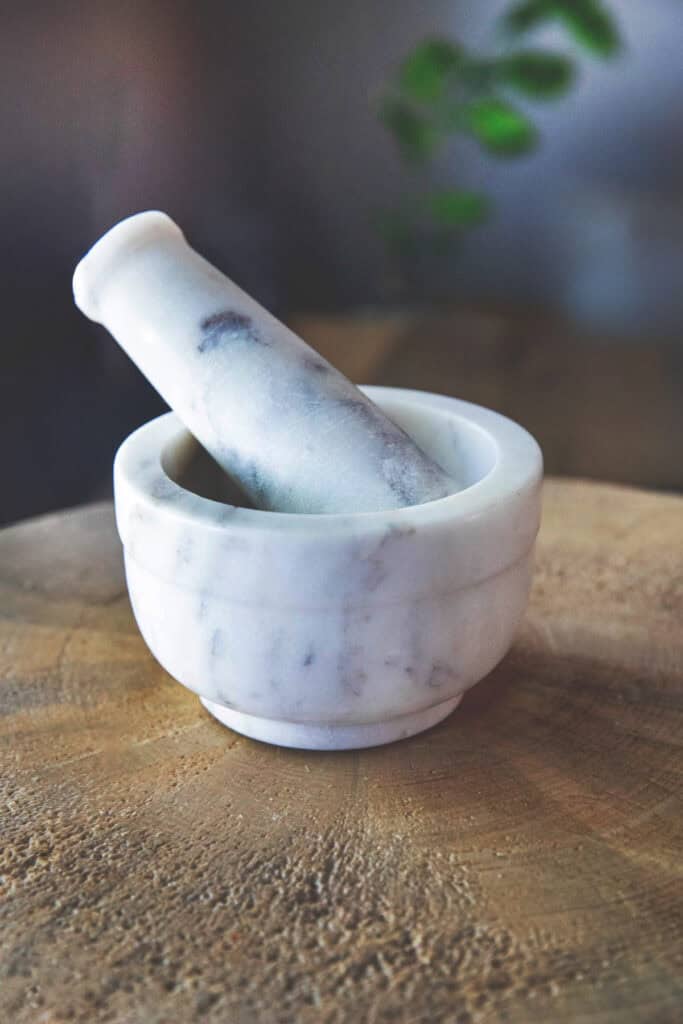
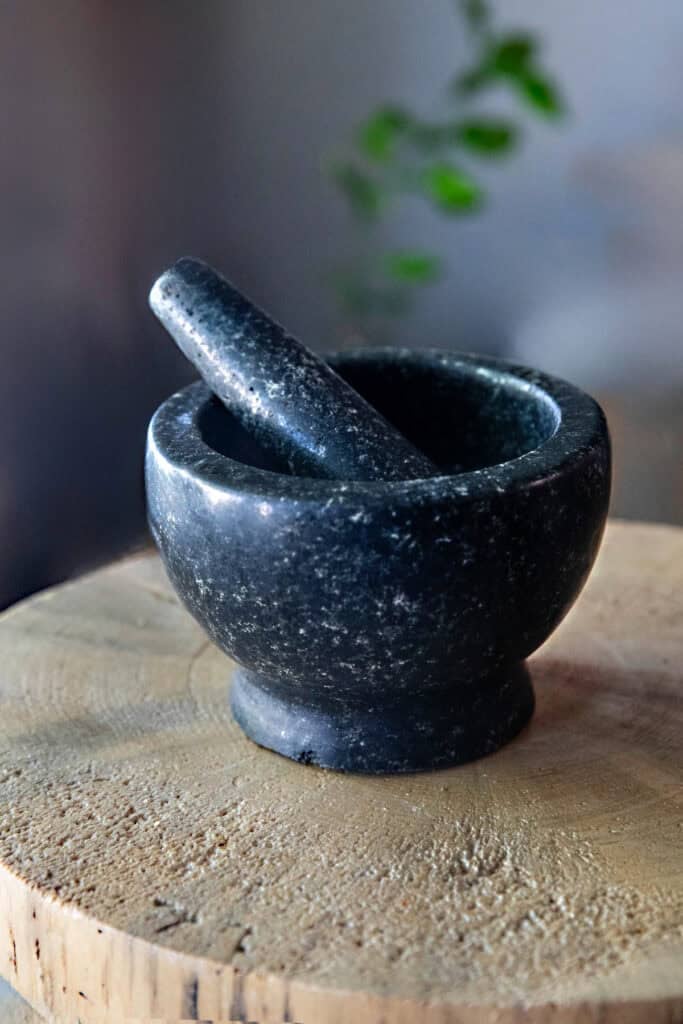
Need to crush toasted rice powder (khao khua) or whole spices? This is your go-to. It’s compact and ideal for dry grinding.
Best for: Toasted rice powder, coriander, cumin, peppercorns
Size: Palm-size or slightly larger
Pros: Small, easy to clean
Cons: Not for wet pastes
4. Extra Large Wooden Mortar and Pestles
Both the mortar and pestle in this style are made from solid wood, commonly found in traditional Thai and Isaan kitchens. Heavier than they look, these tools are built for durability and power—perfect for pounding shredded green papaya, long beans, and chilies without damaging the ingredients too much. They’re especially well-suited for making som tum (green papaya salad) in generous batches.
These can be tricky to find and are often overpriced online. The best place to buy them is at your local Asian market, where they’re more affordable and authentic.
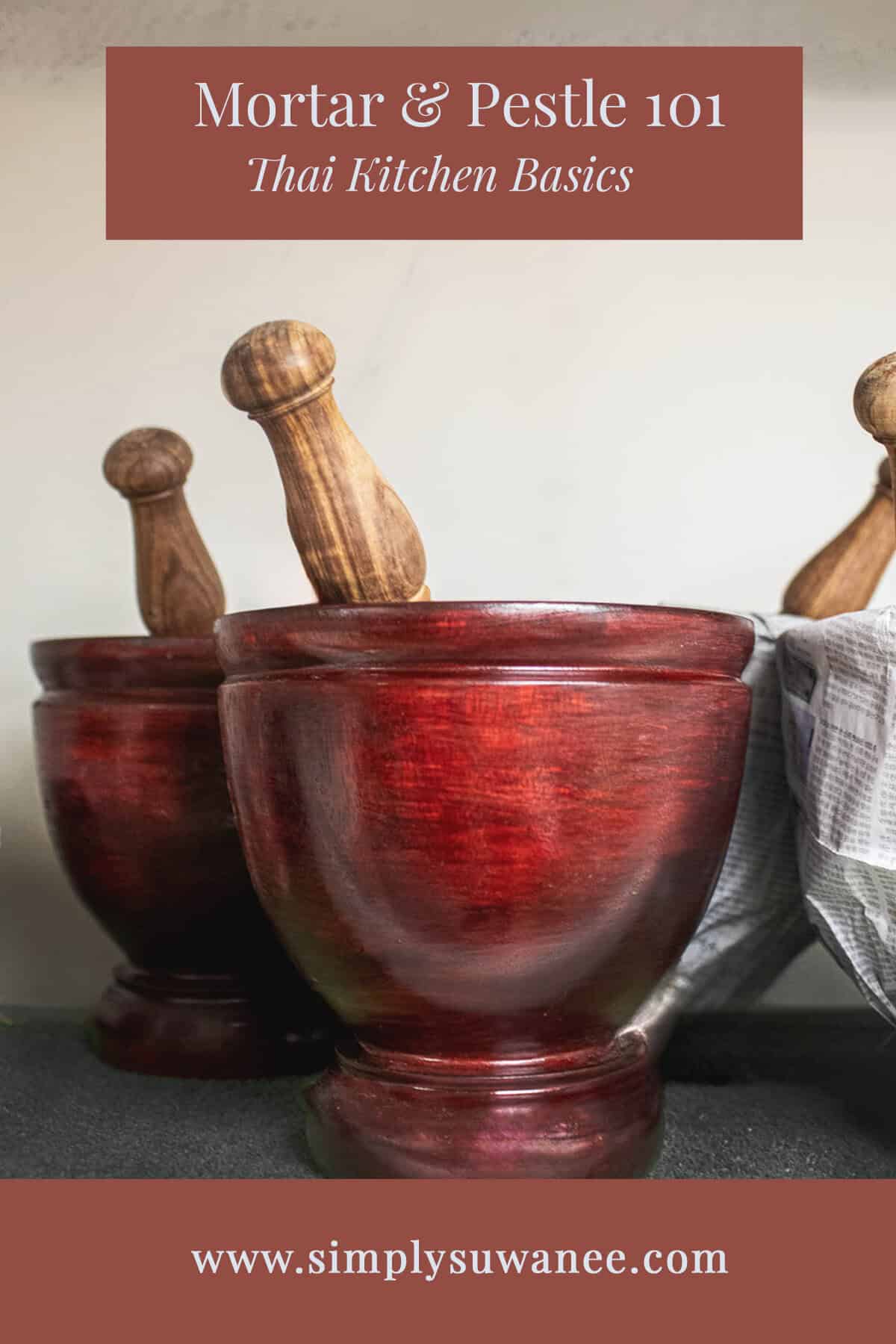
Best for: Papaya salad, larb, herbal dips, and large-portion mixing
Size: Extra-large (typically 8–12 inches in diameter)
Pros: Strong, durable, traditional look; great for tossing and pounding
Cons: Heavy; not ideal for wet curry pastes or fine grinding
Its deep bowl and carved base make it not just practical, but also a beautiful serving piece for family-style Thai meals. I often use mine to present som tum or sticky rice salads—it’s always a showstopper. The all-wood design adds a natural, earthy charm to your Thai table. I often use mine as a serving bowl for party salads—it always gets compliments! and are a staple in many Isaan kitchens. Lighter than granite, they’re easy to handle and ideal for gently pounding ingredients—perfect for dishes like som tum (green papaya salad).
Which One I Use (And Recommend)
For everyday Thai cooking, I use:
If you’re new to Thai cooking, start with a clay and wooden set one—it’s the most versatile.
How to Care for Your Mortar & Pestle
Taking care of your mortar and pestle properly will extend its life—and keep your flavors clean and pure for every dish.
- Granite: Rinse and scrub with hot water, then air dry. Avoid soap.
- Clay: Rinse quickly and dry with a towel. Avoid soaking.
- Ceramic/Stone: Rinse well and store safely.
- Wooden Pestles: Hand-wash with mild soap and hot water. Never put them in the dishwasher.
Avoid metal-on-metal grinding—it can dull your tools and ruin your ingredients.
Choosing the Right Mortar for Your Cooking Style
For curry pastes and chili sauces, go with granite. For Thai salads and dipping sauces, use a clay mortar and wooden pestle. For dry spices or toasted rice powder, small ceramic or stone mortars are ideal.
👉 Want to make authentic larb? Don’t miss How to Toast Rice Powder for Thai Larb
Where to Buy and What to Look For
You can find mortar and pestle sets at Thai, Lao, or Vietnamese markets. Online stores like Amazon or Thai cookware retailers also carry quality sets.
Look for:
- Granite sets labeled “Thai”
- Clay mortars with wooden pestles (not stone pestles!)
- Small ceramic sets for spice grinding
Choosing the Right One:
- Curry pastes? → Granite
- Thai salads? → Clay
- Spices? → Small stone, ceramic or marble
- Cooking for a large group → Extra-large wooden set of mortar and pestle
Serious about Thai food? Invest in both granite and clay. That’s what I do in my kitchen—and the flavor difference shows.
Final Thoughts
A good mortar and pestle is more than just a kitchen tool—it’s a piece of Thai culinary heritage. Whether you’re pounding garlic and chilies or tossing together a crunchy Thai salad, this humble tool brings out flavors no machine can replicate.
Want to learn more about cooking Thai food at home? Start here:
What’s a Good Substitute for a Mortar and Pestle?
If you don’t own a mortar and pestle yet, don’t worry—there are a few easy substitutes that work in a pinch, especially for home cooks trying out Thai food for the first time.
1. Food Processor or Blender
For curry pastes, chili sauces, or marinades, a small food processor or high-speed blender can help break down aromatics like garlic, shallots, and chilies. It won’t have the same texture or depth of flavor as a traditional mortar and pestle, but it’ll still taste great. Just pulse instead of puree to avoid over-processing.
2. Rolling Pin and Zip-Top Bag
Crushing toasted spices or herbs? Place them in a sturdy zip-top bag and gently smash them with a rolling pin or even a wine bottle. It’s not elegant, but it gets the job done!
3. Heavy Pan or Meat Mallet
For quick jobs like bruising lemongrass or lightly crushing garlic, a cast-iron skillet or meat mallet works surprisingly well. Just apply pressure to release the oils and aroma.
4. Coffee or Spice Grinder
For dry spices like coriander seeds, peppercorns, or toasted rice powder (khao khua), a clean coffee grinder works great. Just be sure to wipe it thoroughly between uses.
Why a Mortar & Pestle Is Still Worth It
While these substitutes can help you get started, nothing quite replaces the texture, aroma, and ritual of using a mortar and pestle—especially when making authentic Thai cuisine recipes like curry pastes, chili dips (nam prik), or papaya salad. It’s one of the most essential tools in a Thai kitchen for a reason.
What to Make with Your Thai Mortar and Pestle
